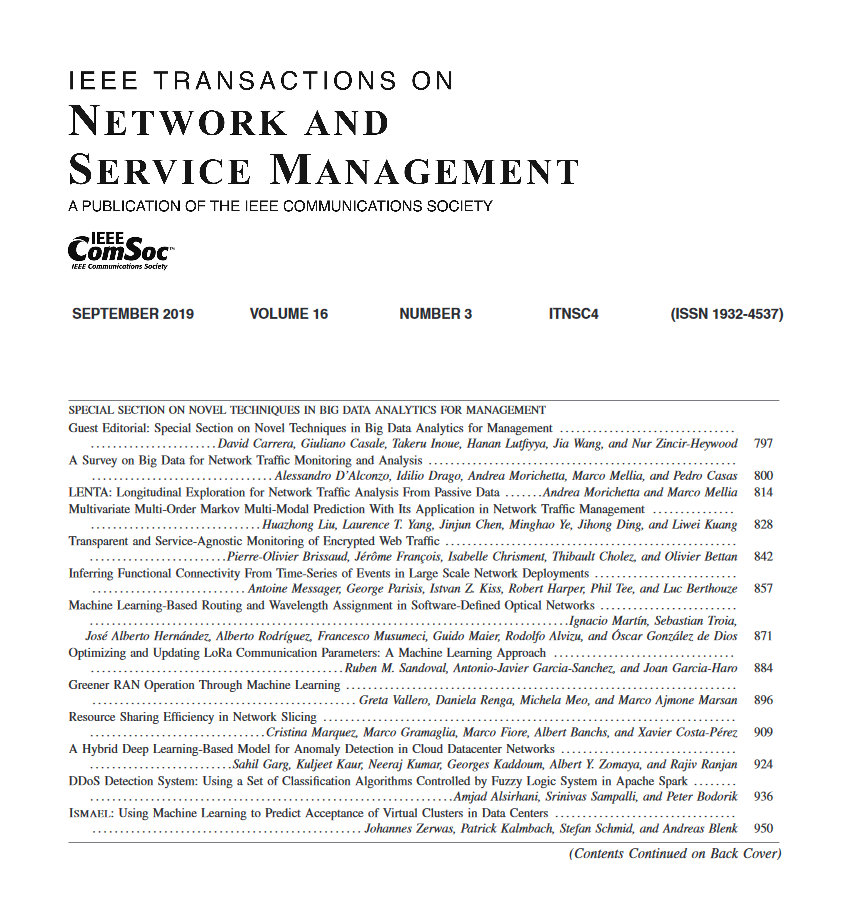Constellation Configuration Optimization Method for User Distribution Characteristics of LEO Satellite Networks
IF 4.7
2区 计算机科学
Q1 COMPUTER SCIENCE, INFORMATION SYSTEMS
IEEE Transactions on Network and Service Management
Pub Date : 2024-11-04
DOI:10.1109/TNSM.2024.3489625
引用次数: 0
Abstract
Low-Earth-Orbit (LEO) satellite networks are a hotspot in the communication industry as they can provide global high-capacity and low-latency communication services. However, the constellation system’s high construction cost and limited resources like computation and storage, coupled with the uneven distribution of ground communication users, make it essential to optimize the constellation configuration to match the uneven communication needs of different regions. This paper focuses on the Walker-Delta configuration constellation and uses a global approximate equal-area partition method to establish the terrestrial communication population distribution model. A constellation configuration optimization method is proposed to match the uneven distribution of global communication users. This paper mathematically characterizes the relationship between the change rule of the constellation’s coverage with latitude and the orbital parameters to obtain the model of the visible satellite number for ground users at any latitude under any constellation configuration. The terrestrial communication population distribution model is constructed based on global population data, and the Spearman correlation coefficient (SCC) is used to measure the match between the constellation coverage performance and the global communication user distribution. With the constellation coverage model, this paper optimizes the constellation configuration. Compared with the core layer of Starlink phase I, the SCC of the optimized constellation proposed in this paper is improved by 29.5%. A program simulation is carried out, and the results indicate that the network access capacity of the optimized constellation is improved by 12.6% compared to the Starlink phase I. The load balancing degree is improved by 25.9%, and the packet loss rate is reduced by 66.6%.低轨道卫星网络用户分布特性的星座配置优化方法
近地轨道卫星网络能够提供全球大容量、低时延的通信服务,是通信行业的一个热点。然而,星座系统建设成本高,计算、存储等资源有限,加之地面通信用户分布不均匀,需要对星座配置进行优化,以适应不同地区不均匀的通信需求。本文以Walker-Delta配置星座为研究对象,采用全局近似等面积划分方法建立了地面通信种群分布模型。针对全球通信用户分布的不均匀性,提出了一种星座配置优化方法。通过对星座覆盖随纬度的变化规律与轨道参数的关系进行数学刻画,得到任意星座配置下任意纬度地面用户可见卫星数模型。基于全球人口数据构建了地面通信人口分布模型,利用Spearman相关系数(SCC)衡量星座覆盖性能与全球通信用户分布的匹配程度。利用星座覆盖模型,对星座配置进行优化。与星链一期核心层相比,优化后的星座SCC提高了29.5%。程序仿真结果表明,优化后的星座网络接入容量比Starlink第一阶段提高12.6%,负载均衡程度提高25.9%,丢包率降低66.6%。
本文章由计算机程序翻译,如有差异,请以英文原文为准。
求助全文
约1分钟内获得全文
求助全文
来源期刊

IEEE Transactions on Network and Service Management
Computer Science-Computer Networks and Communications
CiteScore
9.30
自引率
15.10%
发文量
325
期刊介绍:
IEEE Transactions on Network and Service Management will publish (online only) peerreviewed archival quality papers that advance the state-of-the-art and practical applications of network and service management. Theoretical research contributions (presenting new concepts and techniques) and applied contributions (reporting on experiences and experiments with actual systems) will be encouraged. These transactions will focus on the key technical issues related to: Management Models, Architectures and Frameworks; Service Provisioning, Reliability and Quality Assurance; Management Functions; Enabling Technologies; Information and Communication Models; Policies; Applications and Case Studies; Emerging Technologies and Standards.
 求助内容:
求助内容: 应助结果提醒方式:
应助结果提醒方式:


